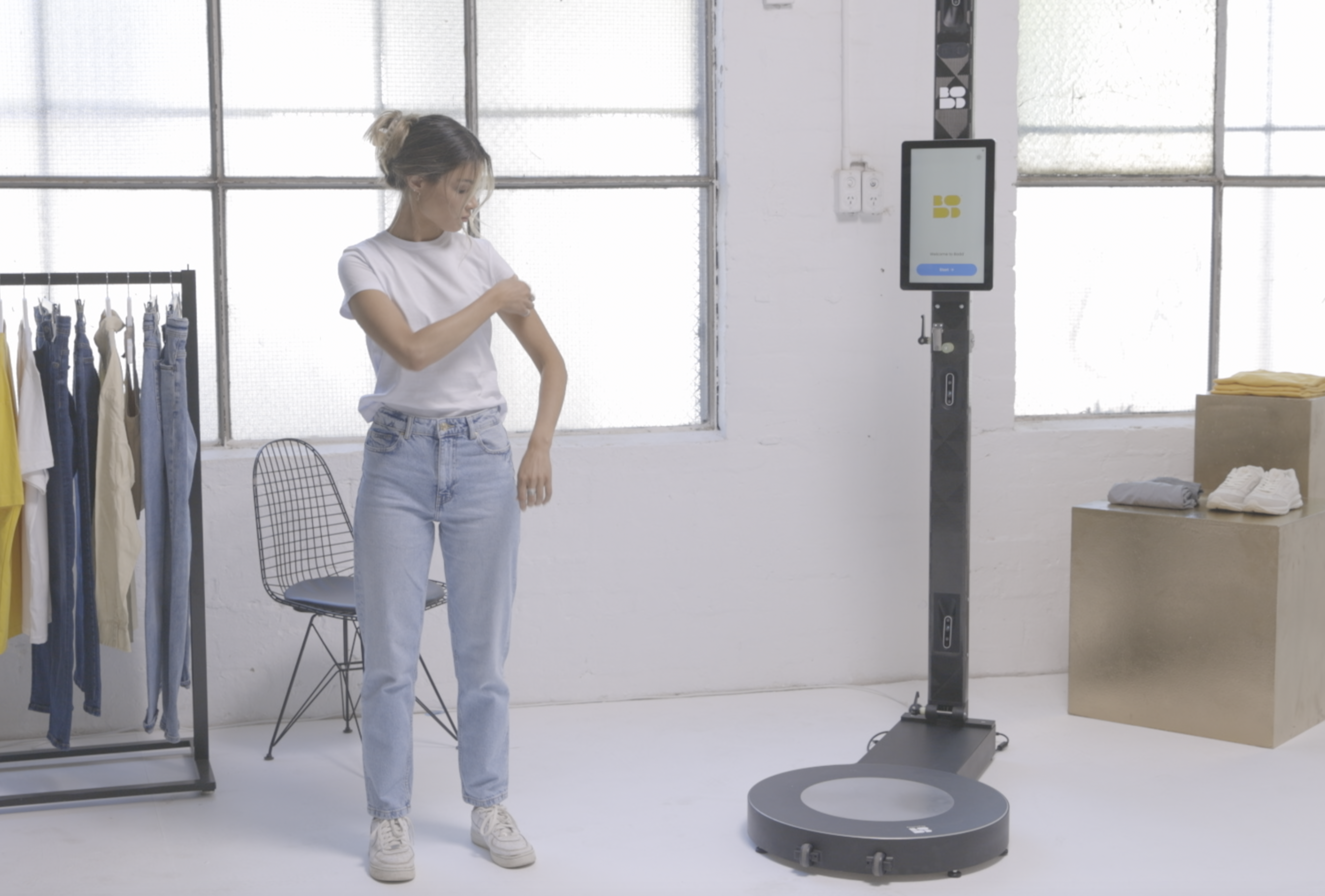How 3D Body Scanners Are Changing the Apparel Industry
Introduction to Body Scanners in the Apparel Industry
The advent of body scanner technology has ushered in a new era for the apparel industry. These sophisticated devices capture detailed 3D images of an individual's body, providing precise measurements and data points that can be used to create perfectly fitted garments.
This leap forward in measurement accuracy represents more than just an improvement in how clothes fit; it's a shift in the shopping experience, offering unparalleled personalization and a new standard in consumer expectation.
The Evolution of Body Scanning Technology
Body scanning technology has evolved from its initial use in medical applications to a valuable tool in the fashion and apparel sector. Early body scanners were large, expensive, and primarily used for medical diagnostics.
However, as the technology advanced, it became more accessible and cost-effective, paving the way for its adoption in the apparel industry. Today's body scanners can capture thousands of data points in seconds, providing a detailed 3D image of the body that can be used for various applications, from custom tailoring to virtual fitting rooms.
Impact on Customization and Personalization
One of the most significant impacts of body scanners is their role in enhancing customization and personalization in the apparel industry. Traditional methods of measuring for custom garments are time-consuming and prone to error, often leading to less than satisfactory fits.
Body scanners eliminate these issues, offering a level of precision that ensures each garment is tailored to the individual's exact dimensions. This not only improves the fit but also allows for a degree of personalization previously unattainable, as customers can have input on design elements knowing that the final product will fit them perfectly.
Revolutionizing Online Shopping
The rise of e-commerce has transformed the retail landscape, but one challenge has persisted: the difficulty of ensuring a good fit without trying on clothes physically. Body scanners are changing this, offering a solution that benefits both consumers and retailers.
By allowing customers to create a digital avatar based on their body scan, online retailers can provide personalized size recommendations and virtual try-on experiences. This technology reduces the uncertainty of online shopping, decreasing return rates and increasing customer satisfaction.
Enhancing Sustainable Practices
Sustainability is a growing concern in the fashion industry, with wasteful practices and overproduction coming under increasing scrutiny. Body scanners contribute to a more sustainable industry by reducing the need for physical samples and enabling on-demand production.
Clothes can be made to order based on precise body measurements, minimizing waste from unsold inventory and returns. This shift towards more sustainable production methods not only benefits the environment but also aligns with the values of a growing segment of consumers.
Challenges and Considerations
Despite the potential of body scanners to transform the apparel industry, there are challenges to consider. Privacy concerns are paramount, as the collection and storage of detailed body data raise questions about data security and consent.
Additionally, the initial cost and integration of body scanning technology can be prohibitive for smaller retailers. Addressing these concerns is crucial for the widespread adoption and success of body scanning in the apparel industry.
Bridging the Gap Between Technology and Fashion
The integration of body scanners in the apparel industry is not just a technological advancement; it's a bridge between the realms of tech and fashion, creating a synergy that enhances both fields.
Designers and brands are now equipped with tools that allow for an unprecedented level of detail in understanding their clientele's needs, enabling the creation of garments that are not only aesthetically pleasing but also perfectly fitted to the wearer's body. This fusion of technology and fashion opens up new avenues for creativity, allowing designers to experiment with designs that were previously impractical or impossible to realize on a large scale.
Empowering Consumers Through Innovation
Body scanners empower consumers by placing them at the center of the design and manufacturing process. This consumer-centric approach marks a departure from the traditional one-size-fits-all mentality, acknowledging the diversity of body shapes and sizes.
By providing accurate measurements and a clear understanding of their body type, consumers can make informed decisions about their clothing, leading to a more satisfying and confident shopping experience. This empowerment is a significant step towards inclusivity in fashion, ensuring that everyone, regardless of size or shape, has access to clothing that fits well and looks great.
The Role of AI and Machine Learning
The potential of body scanners is further amplified by the integration of artificial intelligence (AI) and machine learning algorithms. These technologies can analyze the vast amounts of data generated by body scans to identify trends, predict fit issues, and even suggest design modifications.
For instance, AI can help identify common fit problems for certain body types and automatically adjust patterns to address these issues before a single piece of fabric is cut. This proactive approach to design and manufacturing not only improves efficiency but also significantly reduces the rate of returns due to poor fit, benefiting both consumers and retailers.
The Future of Fashion with Body Scanners
Looking ahead, the potential applications of body scanners in the apparel industry are vast. Beyond custom tailoring and online shopping, this technology could play a role in health and fitness, tracking changes in body shape over time and offering insights into well-being.
As body scanning technology continues to evolve, its integration into the apparel industry will likely deepen, offering new opportunities for innovation and improvement.
Conclusion: Embracing the Change
Body scanners are more than just a technological novelty; they represent a fundamental shift in the way the apparel industry operates. By improving fit, personalization, and sustainability, this technology has the potential to enhance the consumer experience significantly.
As the industry continues to evolve, embracing body scanners will be key to staying competitive in a market that increasingly values customization, quality, and sustainability. The future of fashion is personalized, and body scanners are leading the way.
